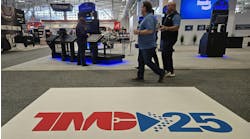The new R-1234yf refrigerant has barely made a dent in the U.S. passenger vehicle fleet, but any doubts about the seriousness of U.S. carmakers to move forward with the new refrigerant were erased during a presentation at the Mobile Air Conditioning Society (MACS) Training Event and Trade Show when a Chrysler official gave an update on the company’s plans. The MACS Training Event and Trade Show was held at the Sheraton New Orleans.
Alan McAvoy, technical advisor for Chrysler’s Midwest Business Center, presented the results of the company’s experience with R-1234yf and its plans to use it in more vehicles. McAvoy presented some performance results with the 2014 Jeep Cherokee, its first vehicle to use the new refrigerant. He noted that R-1234yf’s global warming potential (GWP) is well below the EPA-required 150 GWP.
McAvoy stated at the outset that one reason carmakers are moving forward with the new refrigerant is that it provides Corporate Average Fuel Economy (CAFÉ) credits that carmakers are required to have in the interest of improving fuel economy. “We’re going to grab all those credits the government is going to give us (by using R-1234yf)” he said.
Service procedures for R-1234yf do not differ much from the established R-134a refrigerant, McAvoy said. “The majority of the hardware is the same,” he said. “Our (new) service procedures will be identical.” Some differences in vehicles equipped with R-1234yf include new fittings, new RRR machines, new refrigerant identifiers and new leak detectors, McAvoy said.
The service ports were changed per SAE International requirements so that the R-1234yf systems will have their own unique high and low side service ports that will not interchange with R134a or other A/C fittings to prevent accidental cross contamination with any other refrigerant except R-1234yf, McAvoy said.
R-1234yf requires PAG ND-12 compressor oil, he said. He noted that it is “backward compatible” with some R-134a systems.
He warned his listeners not to use R-134a PAG oil in R-1234yf equipped vehicles since it lacks an acid reducer required for R-1234yf systems.
He claimed that the new refrigerant’s performance and efficiency is comparable to R-134a.
McAvoy reviewed the HVAC controls, housing and control module in the 2014 Jeep Cherokee.
While the new refrigerant is more expensive, in time, the cost will decrease as R-1234yf becomes more widely used.




